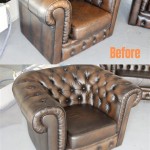How To Wash Duck Feather Sofa Cushions In Washing Machine
Duck feather sofa cushions offer a luxurious and comfortable seating experience, but maintaining their cleanliness requires periodic attention. Washing these cushions in a washing machine is a viable option, provided it is executed correctly. Improper washing can lead to clumping, damage to the feathers, and overall degradation of the cushion. Therefore, understanding the process is paramount to preserving the integrity and longevity of these cushions.
This article provides a comprehensive guide on how to safely and effectively wash duck feather sofa cushions in a washing machine. It outlines the essential preparation steps, the correct washing procedure, and the appropriate drying techniques. Adhering to these guidelines will help ensure the cushions are thoroughly cleaned without compromising their quality and comfort.
Assessing the Cushions and Preparing for Washing
Before attempting to wash duck feather sofa cushions in a washing machine, a thorough assessment of the cushions is necessary. This involves inspecting the fabric casing for any rips, tears, or weak seams. Any existing damage must be repaired before washing to prevent further deterioration during the wash cycle. Loose or damaged seams can cause the feathers to escape, potentially damaging the washing machine and rendering the cushion unusable.
The care label on the cushion cover provides crucial information concerning the recommended washing procedures. Referencing this label is essential as it indicates the appropriate water temperature, washing cycle, and drying methods suitable for the specific fabric and feather filling. If the label explicitly prohibits machine washing, alternative cleaning methods, such as professional dry cleaning, should be considered.
Furthermore, it is important to determine the size and weight of the cushions. Overloading the washing machine can strain the motor and result in an incomplete wash. It is generally recommended to wash only one or two cushions at a time, depending on the capacity of the washing machine. The weight of the wet feathers will be significantly higher than when dry, so ensure the machine can handle the load.
Pre-treating any visible stains is a crucial step in the preparation process. Use a mild stain remover specifically designed for delicate fabrics. Apply the stain remover directly to the affected area and allow it to sit for the recommended time, typically 15-30 minutes, before washing. Avoid using harsh chemicals or bleach, as these can damage the feathers and discolor the fabric.
The Washing Process: A Step-by-Step Guide
Once the cushions have been assessed, repaired (if necessary), and pre-treated, the actual washing process can begin. The washing machine should be thoroughly cleaned before loading the cushions. Remnants of detergent or other cleaning agents from previous washes can potentially damage the feathers or leave residue on the fabric.
Select a gentle or delicate wash cycle with cold water. Hot water can strip the natural oils from the feathers, causing them to become brittle and clump together. Cold water effectively cleans the cushions without causing damage to the feathers or fabric. A slow spin cycle is also essential to minimize stress on the cushions and prevent feather clumping.
Use a mild, liquid detergent specifically formulated for delicate fabrics. Powder detergents can sometimes leave residue, particularly in feather-filled items. Use a small amount of detergent, typically half the recommended dose for a regular load of laundry. Excessive detergent can be difficult to rinse out completely and may lead to mold growth within the cushion.
To ensure even washing and prevent the cushions from becoming unbalanced within the washing machine, consider adding a few clean tennis balls or dryer balls to the load. These balls will help to agitate the cushions and distribute the weight evenly, resulting in a more thorough and balanced wash. This is especially important for larger or heavier cushions.
After the wash cycle is complete, initiate an extra rinse cycle to ensure all traces of detergent have been removed. Residual detergent can attract dirt and dust, causing the cushions to become soiled more quickly. The extra rinse cycle also helps to fluff the feathers and remove any lingering odors.
Drying Duck Feather Cushions Effectively
Proper drying is arguably the most critical step in washing duck feather cushions. Improper drying can lead to significant problems, including mold growth, unpleasant odors, and permanent clumping of the feathers. The goal is to dry the cushions thoroughly and evenly, ensuring that all moisture is eliminated.
The preferred method for drying duck feather cushions is using a tumble dryer on a low heat setting. High heat can damage the feathers and cause them to become brittle. The low heat setting ensures that the feathers dry slowly but effectively, minimizing the risk of damage. Check the cushions frequently during the drying process to ensure they are not overheating.
Similar to the washing process, adding clean tennis balls or dryer balls to the dryer can significantly improve the drying process. These balls help to fluff the feathers and prevent them from clumping together. They also help to distribute the heat evenly, ensuring that all parts of the cushion dry thoroughly.
It is essential to dry the cushions completely. Partially dried feathers are susceptible to mold and mildew growth, which can result in unpleasant odors and health concerns. The drying process may take several hours, depending on the size and density of the cushions. Periodically remove the cushions from the dryer and manually fluff them to ensure even drying.
An alternative drying method is air drying, although this is a much slower and more labor-intensive process. If air drying is chosen, the cushions should be placed in a well-ventilated area away from direct sunlight. Direct sunlight can damage the fabric and cause the feathers to become brittle. Regularly fluff the cushions and rotate them to ensure even drying on all sides.
Regardless of the drying method used, verifying that the cushions are completely dry before placing them back on the sofa is imperative. Place the cushions in a warm, dry environment for an additional 24 hours to ensure all residual moisture has evaporated. This final step helps to prevent mold growth and ensures the cushions remain fresh and comfortable.
Once the cushions are completely dry, they should be thoroughly fluffed to restore their original shape and loft. Gently massage the cushions to redistribute the feathers evenly. This will help to prevent any remaining clumps and ensure that the cushions provide optimal comfort and support.
Finally, consider using a fabric protector spray to help repel stains and spills. This will help to keep the cushions clean and extend their lifespan. Regularly vacuuming the cushions can also help to remove dust and debris, further maintaining their cleanliness and appearance. With proper care and maintenance, duck feather sofa cushions can provide years of comfort and enjoyment.

How To Wash Feather Pillows With Pictures Wikihow

How To Wash Duck Feather Pillows
How To Clean Couch Cushions Filled With Stuffing Tiktok
/how-to-clean-and-care-for-feather-bed-pillows-9367-6452c5048fd846389285b71b6c59e559.jpg?strip=all)
How To Clean And Care For Feather Bed Pillows

How To Wash Feather Pillows Sleep Journal

Replying To Abbeyineclosson Couch Cushion Routine Cleantok Deepclean Vlog Cleaningvlog Dayinmylife Hometok Timelapse Cleanings Anxietyrelief Reset Resetroutine

How To Wash Feather Pillows With Pictures Wikihow
:max_bytes(150000):strip_icc()/How-to-clean-and-care-for-feather-pillows-01-3f4cd7af0a3a480ca0c7c0f7405e4c50.jpg?strip=all)
How To Clean And Care For Feather Bed Pillows

How To Wash Feather Pillows Soak Sleep

Easy Ways To Clean Foam Couch Cushions With Pictures Wikihow








